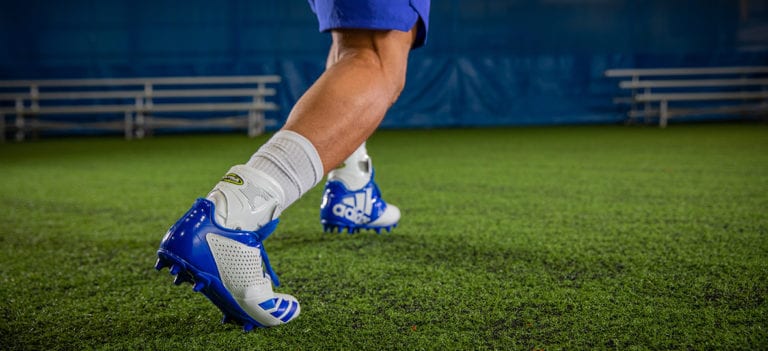
Even though they aren’t the most common ankle issue, acute ankle injuries tend to be discussed more among athletic trainers and sports medicine professionals since they can be the most damaging to an athlete and their career. But what about the most common, less-discussed ankle issue that is prevalent among today’s athletes both young and old? I’m talking about non-acute mild/moderate ankle instability.
Let’s say an athlete has a brief history of previous ligament injuries to the same ankle and they play a sport with a high incidence of ankle injuries, like basketball or volleyball. One goal as an athletic trainer would be to stop the cycle of ankle injury to prevent more severe problems down the road – but what are the best injury prevention methods for mild/moderate ankle instability?
After an ankle injury occurs, the standard next step for most athletic trainers is to implement a rehabilitation program customized to the injured athlete’s specific needs. Though stretching, strength-building, and proprioception exercises help to heal the ankle, it’s never back to 100% because the damaged ligament has lost some of its integrity (tightness) making reoccurring ankle injuries a distinct possibility. For that reason alone, it’s important to prevent ankle injuries before they even occur.
While we would love to share with you a long list of proven ways to prevent ankle injuries, the truth is that bracing the ankle joint is the most effective treatment method available. Once a rehab program is complete what is to stop a volleyball player from landing on another person’s shoe during a jump? A football player from being tackled and falling at the wrong angle? A basketball player from grabbing a rebound and landing on another player? It’s a split second movement that no amount of ankle strengthening can prevent.
With the goal of preventing another ankle injury in mind, the best treatment method for managing mild/moderate ankle instability is to brace the ankle. Bracing is going to provide more support than tape and for a longer period of time. Since we are not focusing on chronic ankle instability, the brace need not be super rigid and restrictive but instead be a lightweight, low-profile ankle brace that is comfortable to wear over long periods of time. A comfortable, long-lasting ankle brace would be the most effective method of treating mild/moderate ankle instability without restricting athletic performance.
If you’ve worked with athletes with mild/moderate ankle instability in the past, what are some of your go-to treatment and rehabilitation options? What methods do you feel have worked best and why? Let us know on our Facebook page, share with us on Twitter, or send us a message on our website.
SHARE WITH FRIENDS
RECENT POSTS
POST BY TOPIC
- Acute Ankle Injuries (7)
- Ankle Bracing (34)
- Ankle Injuries (16)
- Ankle Injury Prevention (20)
- Ankle Instability (6)
- Athletic Trainers (2)
- Athletic Training (3)
- Basketball (7)
- Football (9)
- High Ankle Sprain (4)
- Hiking (2)
- injury (1)
- Mild/Moderate Ankle Injury (2)
- News (2)
- Osteoarthritis (5)
- Pickleball (4)
- Soccer (5)
- Sports (16)
- Tennis (4)
- Ultra 360 Lace-Up (1)
- Ultra CTS (7)
- Ultra High-5 (1)
- Ultra Zoom (11)
- Volleyball (8)
